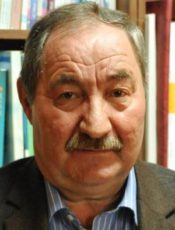The Russian airborne forces redeployed earlier to Tajikistan as part of a surprise inspection of contingents of the Collective Rapid Reaction Force of the Collective Security Treaty Organization (CSTO), conducted drills, the Russian Defense Ministry reported on May 15. They trained to "monitor the situation and conduct reconnaissance of approach routes to the main forces’ positions. The exercise was held at the Kharbmaidon range," the Ministry said. The drills involved CSTO contingents from Russia, Tajikistan, Belarus, Armenia, Kyrgyzstan and Kazakhstan. The CSTO is a regional security group comprising the six above-mentioned countries.
More than 2,500 troops of the Collective Security Treaty Organization (CSTO) states were involved in the military training event along with some 200 weapons systems and 20 combat aircraft. 30 military-transport aviation planes transported the personnel and military equipment to the exercise area and back. CSTO spokesman Vladimir Zainetdinov said at a press-conference held on May 18 that all the Collective Security Treaty Organization forces successfully carried out all the training missions assigned during the drill. It was the first time the Russian troops making up elements of CSTO Collective Rapid Reaction Force were transported by IL-76 transport aircraft. They used Arbalet-2 special parachutes.
The forces were initially deployed in Tajikistan on May 13-15 as a reaction to the exacerbation of the situation on the Tajik-Afghan border. The sound of ongoing battle had been heard for the whole week as Afghanistan security forces were fighting Taliban militants. Kabul said the 12 thousand servicemen were involved in the operation. The civil war in Afghanistan has approached the Tajikistan border. The fighting takes place in Imam Sahib District where the Taliban holds its position on the shore of Panj River.
Combat actions have been going on in Kunduz province for more than two weeks. Combat actions have resumed at least a hundred times as the security forces repelled the attacks of Taliban and the Islamic State. So far, there have been no attempts by militants to cross the border but their numbers keep on growing grow as they are pushed to the border while the fighting goes on. A Kunduz police official, Said Sarwar Hussaini, does not exclude a possibility of a joint operation with Tajikistan against the terrorists hidden in the woodland belt dividing the two states. Mohammad Omar Safi, the governor of Kunduz province, said many militants fighting the government troops come from Tajikistan, Uzbekistan, Kyrgyzstan, Turkey and the North Caucasus. According to him, the militants of Pakistani Taliban also operate in the area. They have pledged allegiance to the Islamic State. Some of the encircled militants belong to the groups Jamaat Ansorullo and the Islamic Movement of Uzbekistan (IMU) trying to break through to Central Asia.
The situation is worsening in Afghanistan. The fighting is moving from south to north. The Taliban forces control about 80% of Badakhshan province located near the Gorno-Badakhshan autonomous region in eastern Tajikistan.
Afghanistan Interior Minister Nur ul-Haq Ulumi has said 11 out of 34 Afghan provinces were seriously threatened, while nine on them faced a lesser threat. Evidently all the Washington’s assurances about the stabilization of the situation in the country are groundless. The mission set 14 years ago before the US forces were deployed in Afghanistan has not been accomplished. No matter that, the operation Enduring Freedom has served as justification for bringing US troops near the borders of the Community of Independent States.
The United States concentrated on military operations ignoring the need to develop the Afghan economy. Afghanistan remains to be the poorest country in the world. Interethnic and interreligious strife has exacerbated. There is no unity within the ranks of political elite. The religious factor has become a driving force behind the armed struggle. In addition to that, Afghanistan has become the world leading poppy grower. According to the United Nations Office of Drugs and Crime, in 2014 the country gathered the largest harvest ever. After the US forces came to the country the poppy production has increased 40-fold.
A grim picture emerged on May 12 when William Brownfield, the U.S. Assistant Secretary of State for the Bureau of International Narcotics and Law Enforcement Affairs, released the results of the Afghanistan World Drug Use survey which revealed that one in nine Afghans are drug users. SGI Global led the team that conducted the survey, which spanned rural and urban districts of Afghanistan and was completed in 2014. Based on the survey – which was prepared as a cooperative effort between the Afghan ministries and the U.S. – three million Afghans are using drugs, and of these, 1.4 million are addicted to drugs.
Actually, the United States uses its presence in Afghanistan to exert pressure on other states, especially Russia and the neighboring Central Asia. In 2014 NATO transferred formal responsibility for the nation’s security to Afghan forces. Since then large formations of militants have moved to the border with Tajikistan. The leadership of Badakhshan has already complained about the neglectful attitude of central government towards the security needs of the province. If Kabul fails to take urgent measures the whole province will be under the control of armed opposition. There is a ground to believe that the scenario when the Islamic State captured a large chunk of Iraq’s territory may be repeated.
Dushanbe knows it well. It boosts security in the border areas. Foreigners are banned from visiting the Gorno-Badakhshan Autonomous Region. The Collective Security Treaty Organization is monitoring the situation ready to respond. Russia has deployed in the area MI-8 transport helicopters, some of them are gunship versions, as well as MI-24 gunship and attack rotary wing aircraft and Forpost unmanned aerial vehicles. The regional security and the situation in Afghanistan will be in focus of the Collective Security Treaty Organization. The next meeting of the Committee of Security Secretaries from the Collective Security Treaty Organization (CSTO) will take place in the Tajik northern city of Khujand on May 20.









